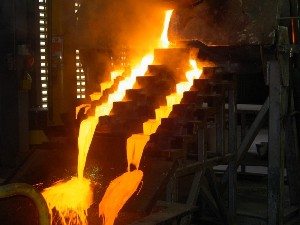
[miningmx.com] – IN a sector short on cheer, the start-up of $1.7bn Kibali gold mine was positive news for Randgold Resources and AngloGold Ashanti – the 550,000 oz/year mine’s joint venture partners – but for differing reasons.
For AngloGold Ashanti, the mine represents an important milestone in its recovery which so far has been predicated on a bitter medicine of corporate cost-cutting, and microscopic attention to its balance sheet.
Kibali, however, represents low-cost revenue addition.
“In our view, the start of production at Kibali is the first achievement on AngloGold Ashanti’s new strategy,” said Bank of America Merrill Lynch in an investment report. It added that Kibali will provide attributable production of 270,000 oz/year to AngloGold Ashanti at lower than average cost cuts.
The mine, situated in the Democratic Republic of Congo, will be followed by new production from AngloGold’s Tropicana mine in Australia.
Combined, the two mines add 600,000 oz/year of new production and provide the AngloGold’s CEO, Srinivasan Venkatakrishnan the flexibility to cut and hone less profitable or unprofitable ounces elsewhere in the group, most likely the Continental Africa mines once owned by Ashanti Goldfields.
For Randgold Resources, Kibali is the fifth mine developed by the group from grassroots and is a reminder of the virtues of patience and prudence. The dramatic decline in the gold price over the last 18 months has exposed the exuberance of growth at all costs in the world’s gold sector.
Speaking at the Denver Gold Conference this week, Barrick Gold Corporation said it would not be alarmed if gold production fell and that it would focus on five key mines. The messaging from the rest of the sector has been similar.
“If you are a gold bug you should own Randgold,” said Numis Securities, a UK-based stockbroker. “This is a good example of how a gold company should be run.”
Said Investec Securities: “In an industry littered with failed target dates, Randgold has done exceptionally well to get Kibali to this stage, ahead of schedule and only modestly above the original capital estimate, particularly given the scale, the remote location and the need to relocate 4,000 families”.
Development of Kibali started less than three years ago. It’s now likely, according to comments by Randgold Resources CEO, Mark Bristow, that the mine will exceed its 30,000 oz production target for this calendar year.
“Kibali becomes the fifth gold mine the company has delivered since 2000, and constitutes a long-life, low-cost cornerstone asset,” said BMO Capital Markets in a note to clients.
“Randgold remains a preferred gold producer offering near-term production growth from a portfolio of quality assets with potential to generate meaningful free cash flow,” it added.
In a presentation in Denver, Bristow said globally more gold production would be cut following a “rush to increase production at all costs”.
Reserve grades had halved during this period which meant that gold mining companies were now required to double mining and processing capacity. As a result, there had been a commensurate increase in capital and operating costs, he said.
“This is the real issue facing the industry,” said Bristow.
“In order to reduce cash costs and deliver improved returns, the industry will have to move its operations back up the grade curve, which will entail taking out a lot of current production, painful as that may be,’ he said.
Venkatakrishnan said that in addition to the low cost production Kibali would provide AngloGold Ashanti, there would also be a decline in capital expenditure.
Some $460m in combined savings from corporate overheads and exploration activities would also be cut while another project aimed at slashing $500m in direct operating cost savings was also underway.










